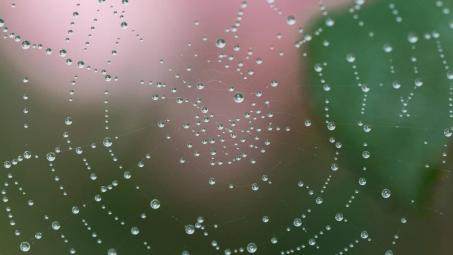
The physics at work in the beading of dewdrops on a spiderweb is the same as that which drives the sub-microscopic beading of a protein called TPX2, which is necessary to building microtubules (the skeleton of the cell) and which also plays a role in some cancers.
Photo by Pixabay
Dewdrops on a spiderweb reveal the physics behind cell structures
Caitlin Sedwick for the Department of Molecular Biology Jan. 29, 2021
As any cook knows, some liquids mix well with each other, but others do not.
For example, when a tablespoon of vinegar is poured into water, a brief stir suffices to thoroughly combine the two liquids. However, a tablespoon of oil poured into water will coalesce into droplets that no amount of stirring can dissolve. The physics that governs the mixing of liquids is not limited to mixing bowls; it also affects the behavior of things inside cells. It’s been known for several years that some proteins behave like liquids, and that some liquid-like proteins don’t mix together. However, very little is known about how these liquid-like proteins behave on cellular surfaces.
